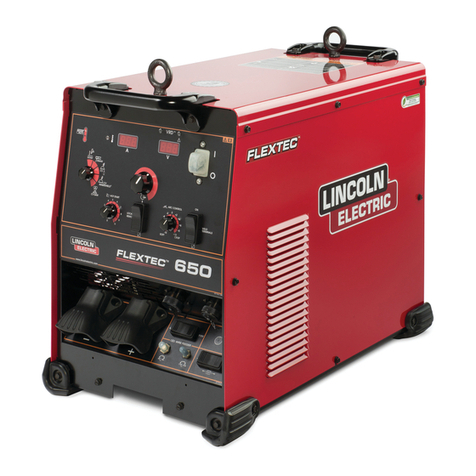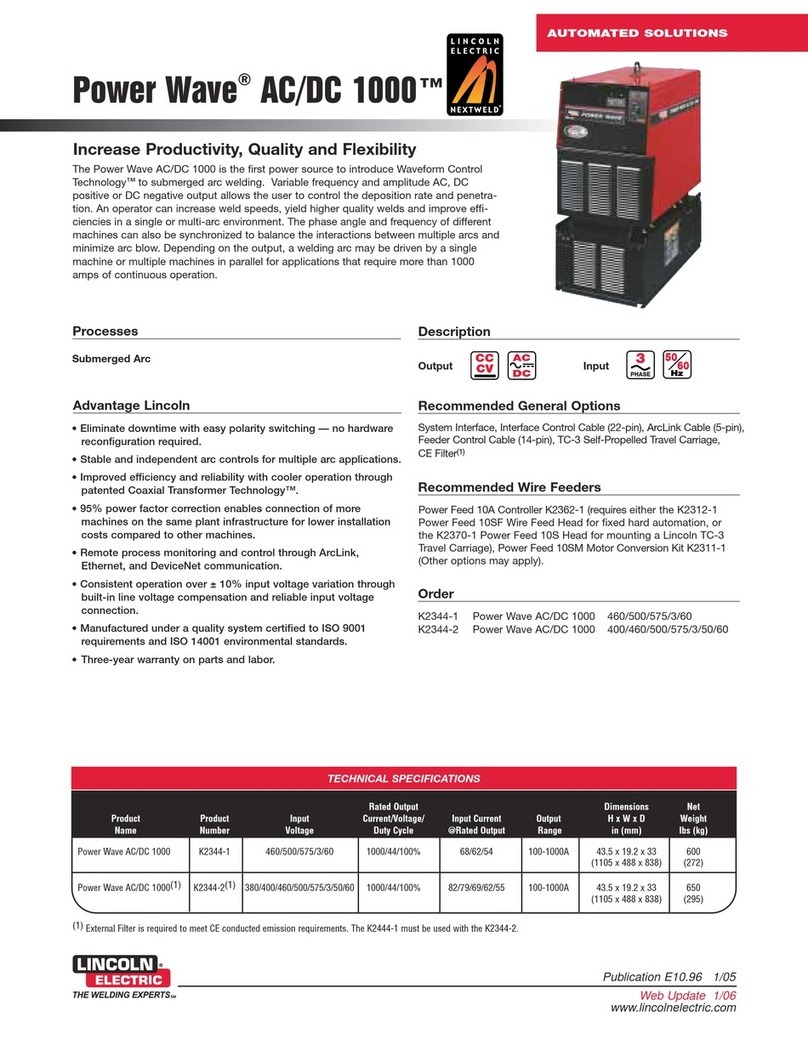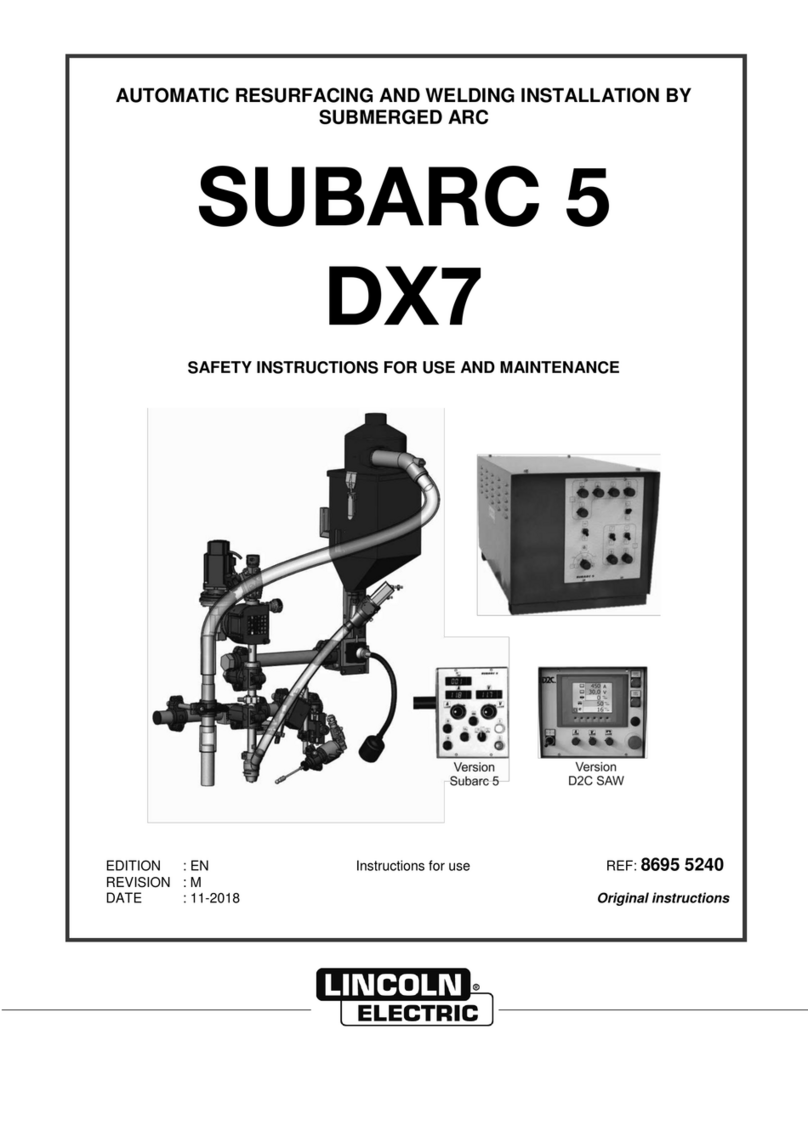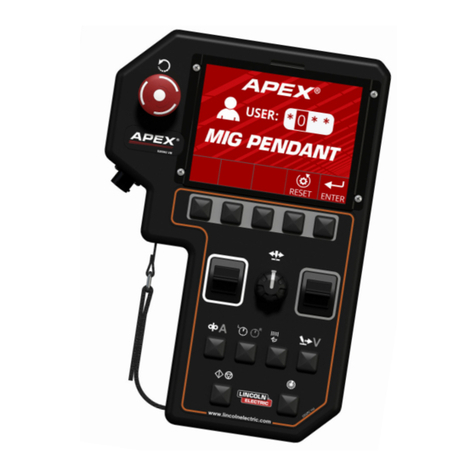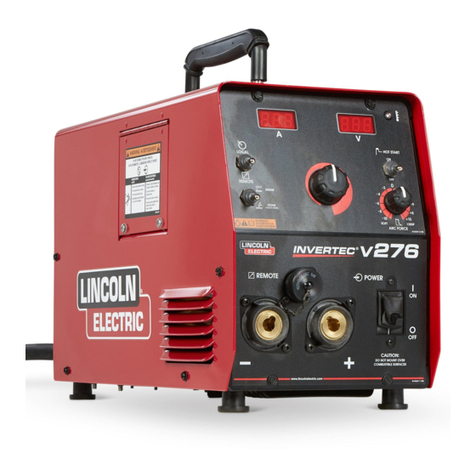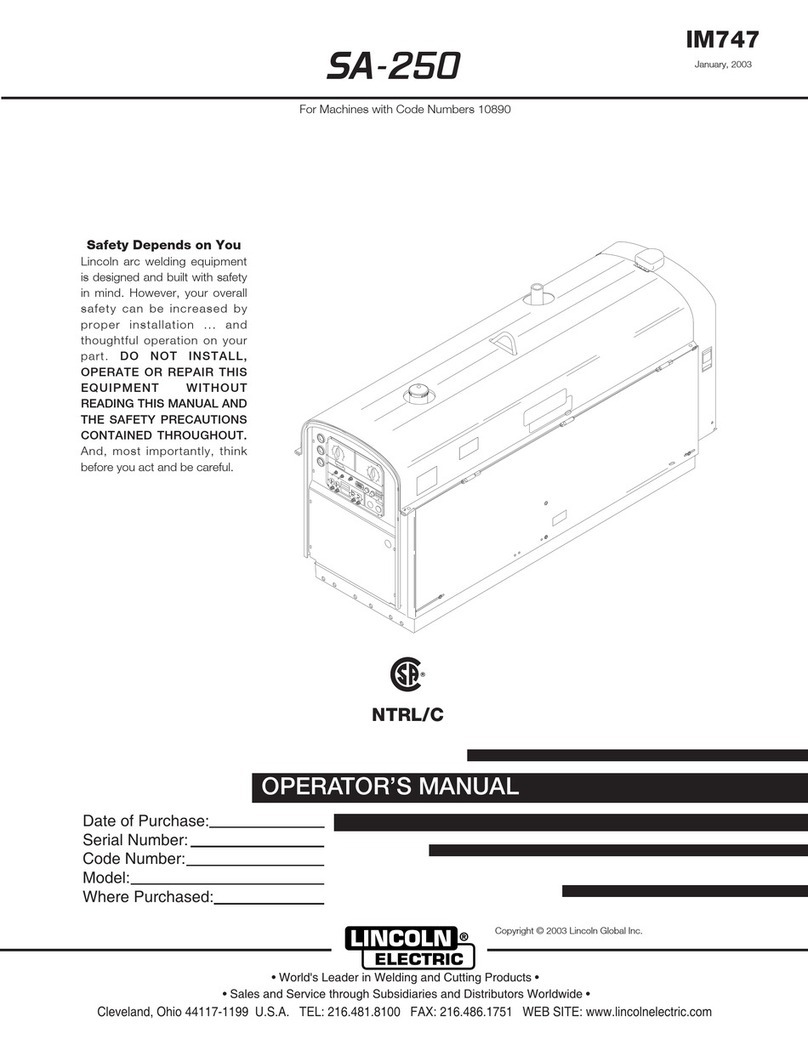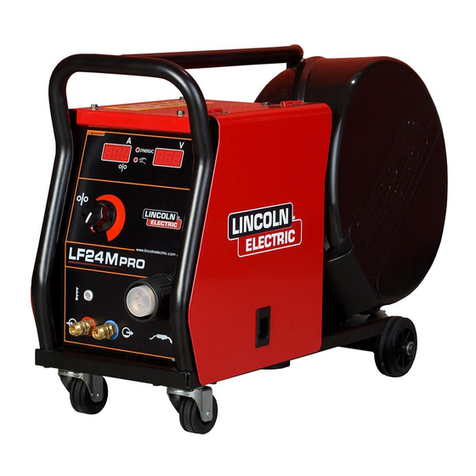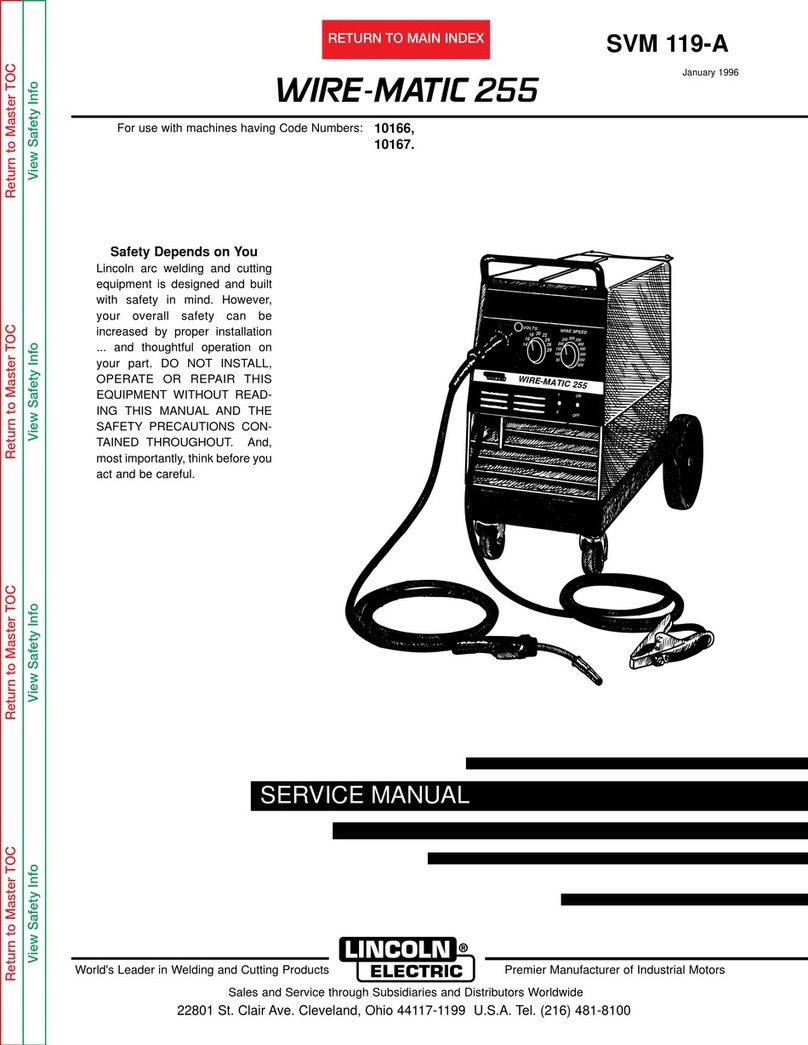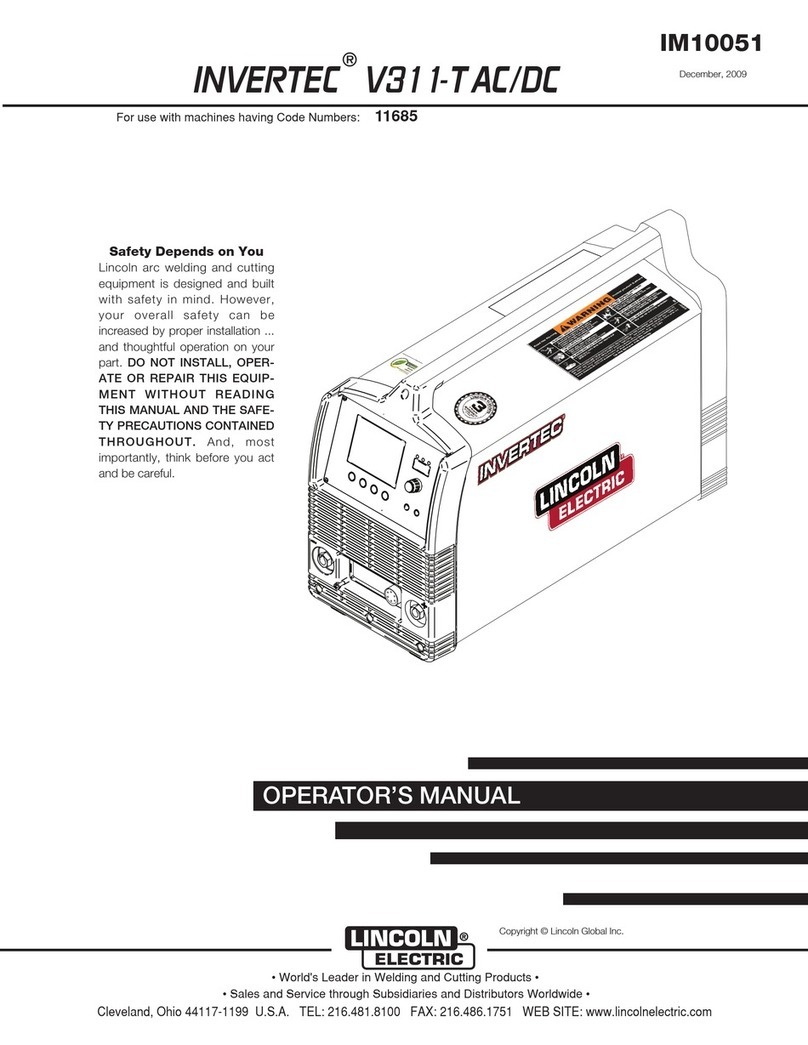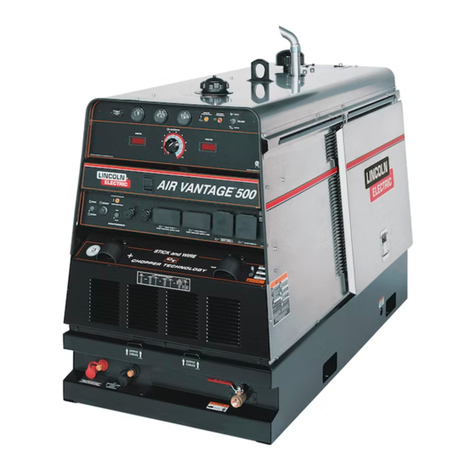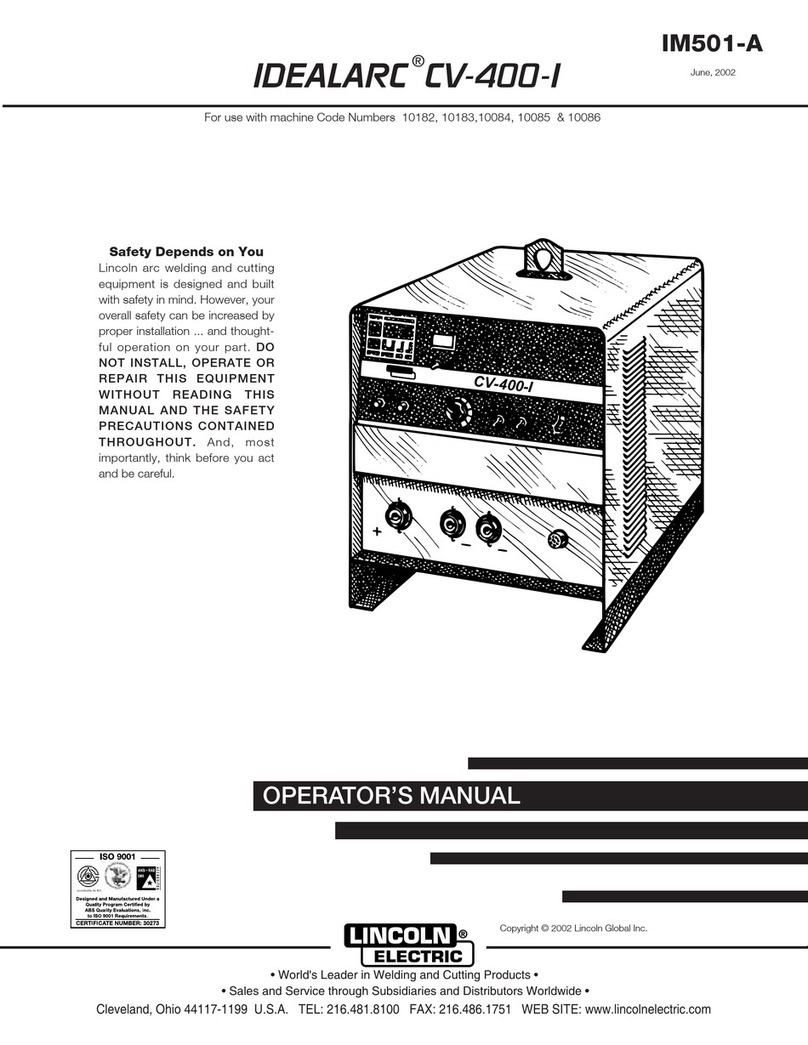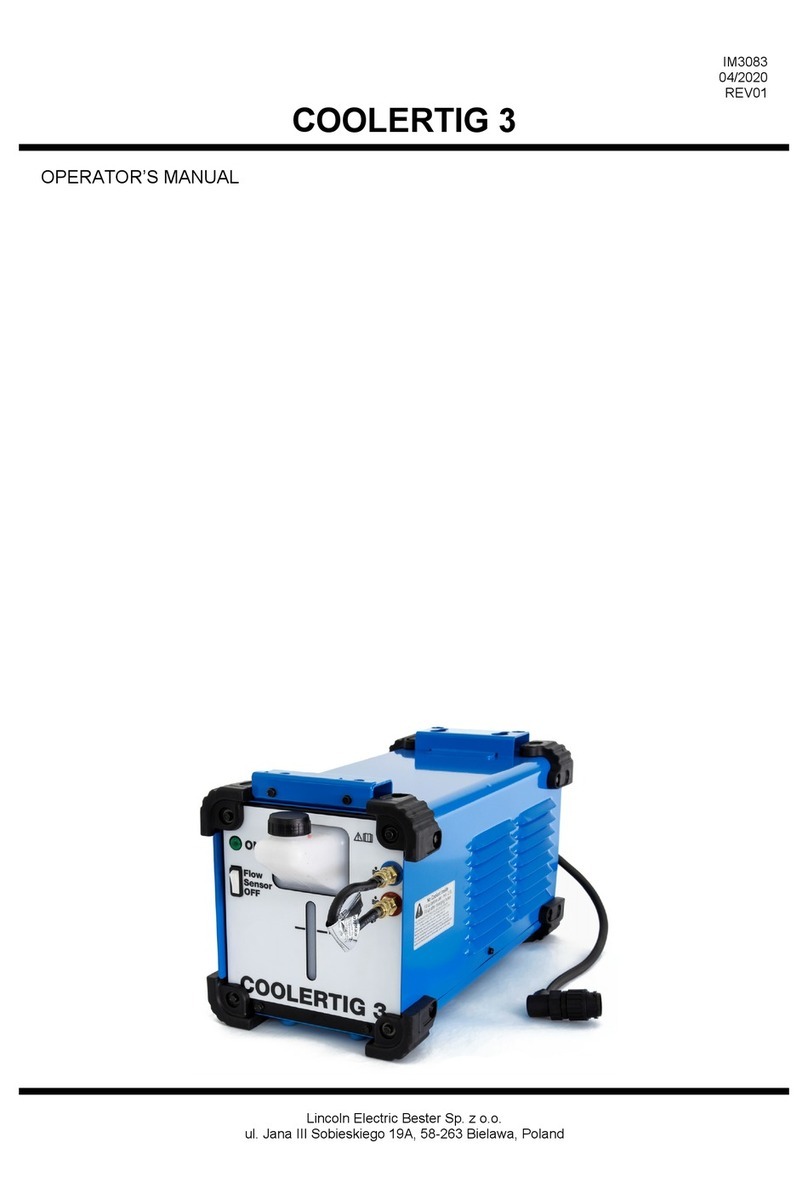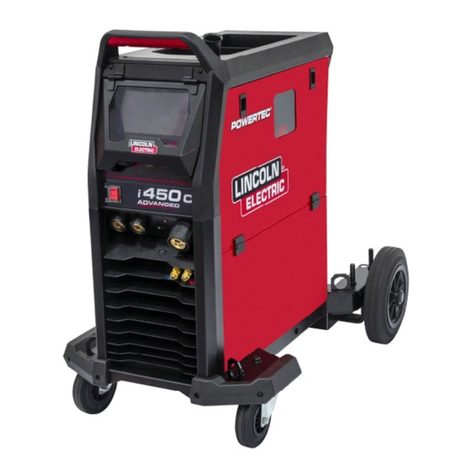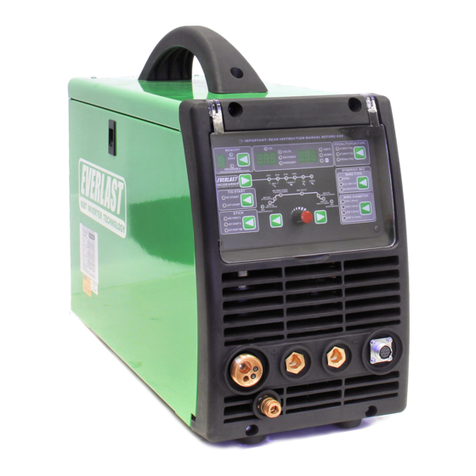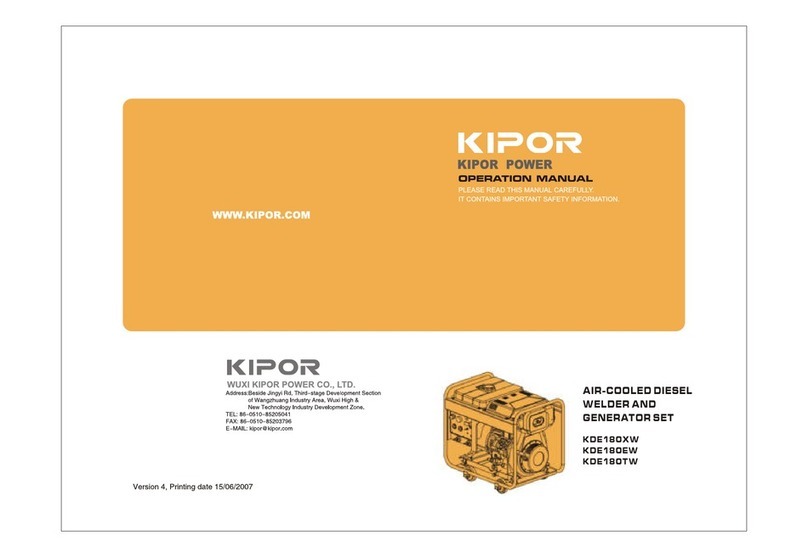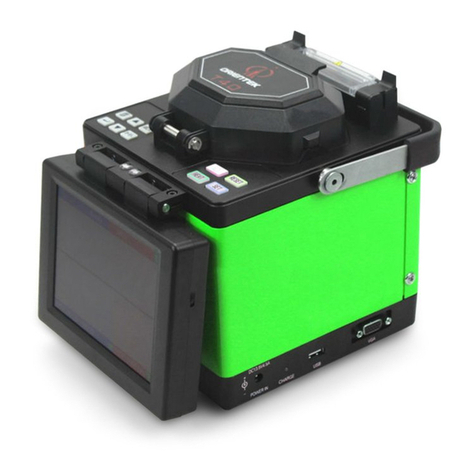SUCCESS
4/4
assist us remotely to solve problems,”
said Ownbey. “We also rely on our
local Lincoln representatives. All are
professional and quick to respond.
Recently, when we developed a
problem with a torch cooling unit, we
called Lincoln. By the next morning
we had a new unit in our shop.”
As far as training, ten of the company’s
robotic cell operators attended Lincoln
training in Cleveland for programming,
maintenance and service of the
systems.
Conclusion
According to Ownbey, the company
is currently pursuing automation in a
number of key areas within the plant.
As to the future of welding automation,
the company looks forward to perform-
ing their own off-line programming
soon.
In the future, look for Valley Industries
to introduce new products and en-
hance the size of current distribution
facilities to meet the growing demand
for their hitch products.
Valley Industries
Automation
Power Wave®455M
Superior Arc Performance.
Revolutionary Communication.
For welding thicker materials in
robotics, hard automation and semi-
automatic applications, choose the
Power Wave®455M. This model
features Waveform Control Technology®
for superior arc performance on a
variety of materials, including steel,
stainless steel, aluminum and nickel
alloys, and delivers custom control
of the arc for each wire type and size
for consistent welds time after time.
The Power Wave 455M is designed
to be part of a modular, multi-process
welding system in which power
sources can be added or removed
to create a series of highly integrated
and flexible welding cells.
SuperArc®L-50
Our most popular MIG wire, SuperArc®
L-50, premium copper coated wire, is
an excellent choice for 50,000 psi (345
MPa) yield strength, carbon steel base
materials. SuperArc L-50 has moderate
levels of silicon and manganese for
deoxidation and cleaning action. De-
signed for use on clean, oil-free, and
rust-free base material. Will tolerate
light millscale. SuperArc L-50 also has
an excellent reputation for feedability
and trouble-free performance. Shielding
gases include argon/carbon dioxide
blends, argon/oxygen blends, straight
carbon dioxide, and three or four-part
gas mixes.
Pulsed GMAW
WAVEFORM CONTROL TECHNOLOGY®
Featured Lincoln Products
WHAT IS NEXTWELD?
The challenges facing industrial
fabricators today are growing in number
and complexity. Rising labor, material and
energy costs, intense domestic and global
competition, a dwindling pool of skilled
workers, more stringent and specific
quality demands all contribute to a
more difficult welding environment
today.
Through our
commitment to
extensive
research
and
investments
in product
development,
Lincoln Electric
has established
an industry
benchmark for applying technology to
improve the quality, lower the cost and
enhance the performance of arc welding
processes. Advancements in power
electronics, digital communications and
Waveform Control TechnologyTM are the
foundation for many of the improvements.
NEXTWELD®brings you a series of
Process, Technology, Application and
Success Story documents like this one.
NEXTWELD explains how technologies,
products, processes and applications are
linked together to answer the important
questions that all businesses face:
• How can we work faster, smarter, more
efficiently?
• How can we get equipment and people
to perform in ways they’ve never had to
before?
• How do we stay competitive?
NEXTWELD is the future of welding but its
benefits are available to you today. Ask
your Lincoln Electric representative how
to improve the flexibility, efficiency and
quality of your welding operations to
reduce your cost of fabrication.
THE LINCOLN ELECTRIC COMPANY
www.lincolnelectric.com
1.216.481.8100



